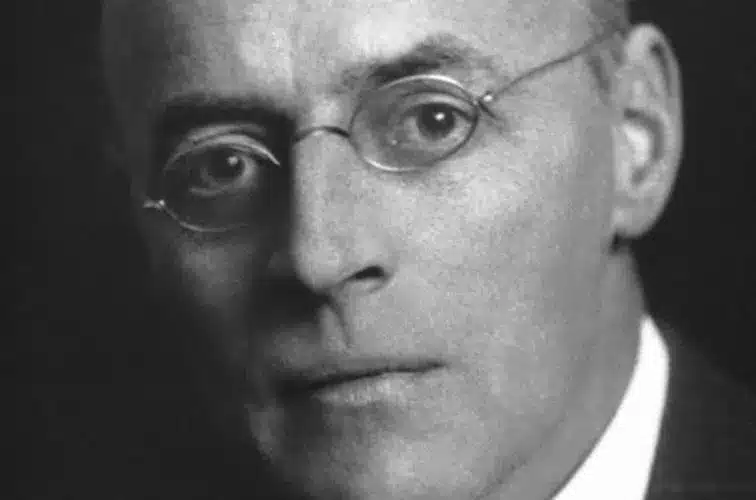Owen Willans Richardson, (26 April 1879 – 15 February 1959) was a British physicist. He won the Nobel Prize in Physics in 1928 for his work on thermionic emission, which led to Richardson’s law.
Life and Career
He was born on 26 April 1879, in Dewsbury, Yorkshire, UK. He got his BSc in Natural Science in 1900, with distinctions in physics and chemistry. He had gotten in touch with JJ Thompson at Cavendish Laboratory and was interested in his work on cathode rays and subatomic electrons.
In 1900, Richardson was invited back to Cambridge after graduating. He accepted the offer and started working with Thompson on hot body electricity emissions.
In 1901, he read two scientific papers to the Cambridge Philosophical Society. He read a law governing electric emissions. Later, it became known as Richardson’s Law.
He became famous for these papers, and in 1902 he became a Trinity College Fellow.
He left the Cavendish Laboratory and joined Princeton University, New Jersey, U.S.A., as a physics professor in 1906. While here, he mainly worked on thermionic emission, photo electricity, and geomagnetic forces.
During this time, he also wrote a lot of papers. He coined the term ‘thermionics’ in an article published in 1909 in Philosophical Magazine.
Also, he’s writing a book called ‘The Electron Theory of Matter’. This book was published in 1914 and consists mostly of articles developed from Princeton lectures.
In 1914, Richardson became a professor of physics at King’s College of the University of London, and 10 years later he was director of research. In 1939, he was knighted.
He was involved in secret military research into telecommunications, wireless telegraphy, and telephony during World War I.
He was President of Section A (physics) of the British Association for the Advancement of Science in 1921-1922.
Later, he started working on military stuff like radar, sonar, electronic test instruments, and magnetrons and klystrons when World War II broke out.
He also contributed to the development of quantum mechanics and was a Fellow of the Royal Society.
He died on 15 February 1959, in Alton, Hampshire, England.
Major Work
He proved that electrons don’t come from the air, but from hot metal in 1911. The same year, he proposed a mathematical equation relating electron emission to metal temperature. This equation, called Richardson’s law or the Richardson-Dushman equation, was crucial to electron tube technology.
His research was instrumental in the development of electron tubes, which are used in a wide range of electronic devices such as televisions, radios, and computers.
Award
He won the Nobel Prize in Physics in 1928 for his work on electron emission from metals.

